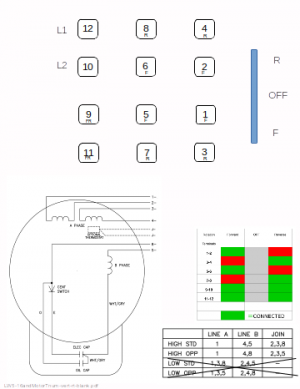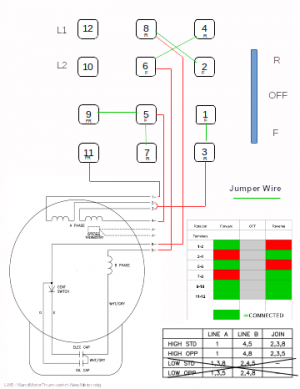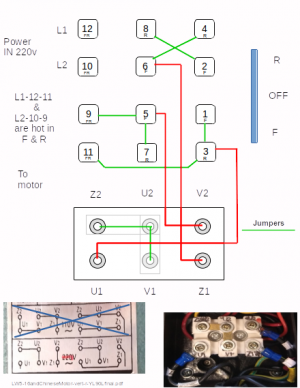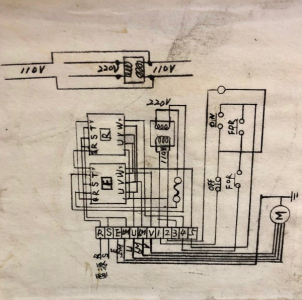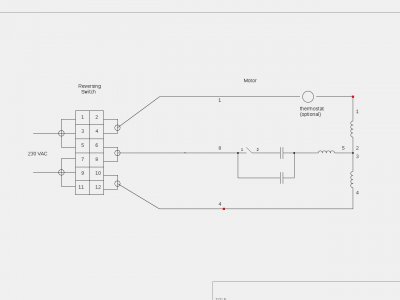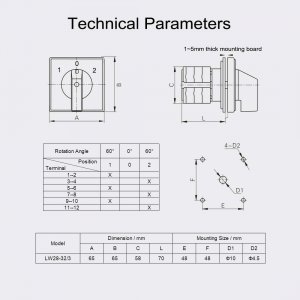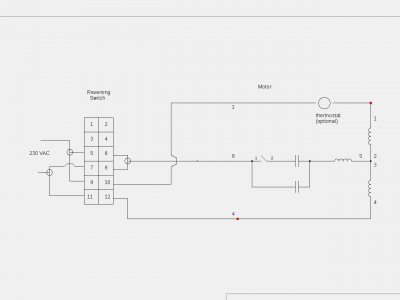I'll dispense with the background issues (unless you really want to hear the story) and post my wiring diagram both for checking and for a better way to do it. There's so many switch types and incomplete switch and motor information that it's difficult to reach a solid conclusion for a wiring setup. That leaves us with connections that are probably better than a best guess but maybe not quite the perfect setup. A final setup that runs and doesn't produce smoke is probably OK, but? I really don't see any other way to make the start winding run on 110v and still retain the reversibility. My diagram is there along with a blank worksheet if anyone has either a correction or a better/easier way to do it. My diagram uses 5 wires from the motor to the switch. I've seen diagrams with 3 and 4 wires to do the same thing but I suspect it has to do with the type of motor and windings. I'm far from being a motor expert so if you happen to use my wiring methods then you're on your own. Pics and pdf included. For info, Grizzly G6760, alias X6320A, Jet 836, Enco 10-1525.
Thanks for taking a look
Thanks for taking a look
Attachments
Last edited:


